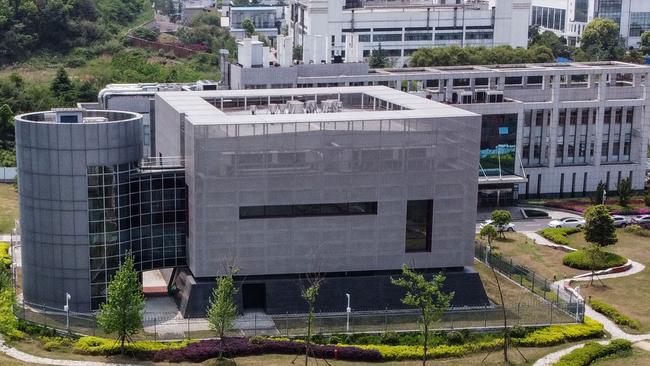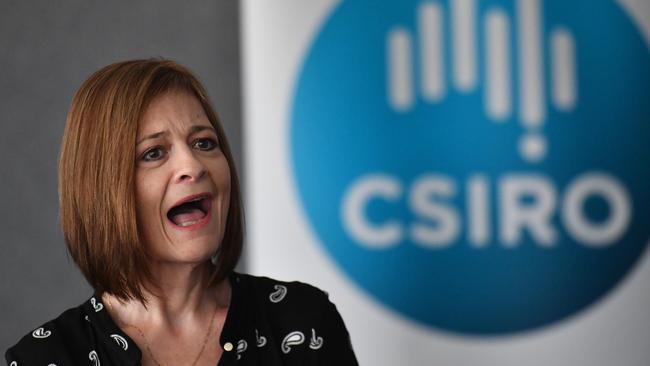Greg Hunt orders review into risky Wuhan research
The CSIRO and several Australian universities have engaged in at least 10 joint projects with the Wuhan Institute of Virology in the past decade.

The CSIRO and several Australian universities have engaged in at least 10 joint projects with the Wuhan Institute of Virology in the past decade, a laboratory US intelligence has linked to the Chinese military and which is suspected of being at the centre of the Covid-19 outbreak.
Australian scientists and politicians are calling on Health Minister Greg Hunt to halt and review “gain-of-function” research in Australia, amid concerns this type of experimentation may have sparked the pandemic.
The risky research, which aims to increase the virulence of viruses through genetic manipulation, is allowed to take place under Australian government policy, even though it was deemed so dangerous the Obama administration banned it in 2014.
Late on Thursday — after questions from The Australian — a spokesperson for Mr Hunt said he had ordered a review of gain-of-function research in Australia by the National Health and Medical Research Council.
The CSIRO has been forced to correct evidence it gave at a Senate estimates hearing after initially denying its researchers had undertaken work on live bats with the Wuhan Institute of Virology, the lab at the centre of growing international concern it was the source of Covid-19. CSIRO chief operating officer Judi Zielke admitted the organisation had “undertaken research on bats previously”.
“Australian Centre for Disease Preparedness did undertake research on bats in collaboration with the Wuhan Institute of Virology in 2016-17,” Ms Zielke said.
Under questioning from Nationals senator Matt Canavan on June 3, the CSIRO initially gave evidence that it “does not undertake research on live bats at ACDP”. However, Senator Canavan later presented the CSIRO with an excerpt from a scientific paper written in conjunction with the Wuhan lab stating: “Wild caught P Alecto bats were trapped in Southern Queensland, Australia, and transported alive by air to the Australian Animal Health Laboratory in Victoria, where they were euthanised for dissection.”
Correcting the record in a letter the next day, Ms Zielke said her responses “weren’t clear and have led to misinterpretation of the answers”. She clarified that research on live bats was not currently being undertaken but had been.

Senator Canavan said the Morrison government should immediately suspend any gain-of-function research or experiments involving potential pandemic pathogens. “Serious questions have been raised that gain-of-function may be the reason we have a global pandemic so it would be absolutely irresponsible to continue such funding when there is a risk of it causing another pandemic,” Senator Canavan said.
“I don’t think there’s a case to fund gain-of-function research long term but, if there is, the burden of proof should be on those virologists who think it makes sense and they should be held to account for how they are protecting the wider community for this type of research.”
Raina MacIntyre, head of the Kirby Institute’s biosecurity program, said she has been concerned about the risks of gain-of-function research since 2011, from both an ethical standpoint and because of the risk of accidents.
“It’s the kind of research that has global impact because you can do a bit of research here in Australia, say there’s an accident, and it spreads the virus, it can infect people in Indonesia, or in India or somewhere else where the research wasn’t conducted, so that opens up a whole lot of other ethical questions,” Professor MacIntyre said. “The possibility (that gain-of function research causing the Covid-19 pandemic) has to be considered because if we don’t consider the possibility, then we can’t take any action to prevent any future incidents that might occur. And we know that there are a lot of laboratory accidents that have been documented.”
Australian government policy has continued to allow gain-of-function research.

A spokeswoman from the Office of the Gene Technology Regulator said: “Work with genetically modified pathogenic viruses would be restricted to a high-level containment facility certified by the regulator and would require a licence from the regulator before it can proceed. Australia’s gene technology legislation is regularly reviewed to keep the legislation up to date with technological progress and changes in scientific understanding of the risks posed by gene technology.”
The CSIRO’s Australian Animal Health Laboratory, in East Geelong, is one facility accredited to undertake research on pathogenic viruses.
The CSIRO trained Chinese infectious diseases expert Shi Zhengli’s protege, Peng Zhou, who is now head of the Bat Virus Infection and Immunity Project at the Wuhan Institute of Virology. Associate Professor Zhou spent three years at the Australian Animal Health Laboratory from 2011 to 2014. He was sent by China to complete his doctorate at the CSIRO in 2009-10.
Professor Shi, director of the Centre for Emerging Infectious Diseases at the Wuhan Institute of Virology, also worked in Australia from February to May 2006.
Australian universities have engaged in at least 10 collaborative projects in the past decade with the Wuhan lab. The most recent CSIRO project with the Wuhan Institute of Virology was in 2016. It involved providing the first gene map of the Type 1 interferon region of a bat species and was done by the Wuhan Institute of Virology, Monash University, the CSIRO and the University of Melbourne.
The CSIRO and Wuhan Institute of Virology also collaborated in 2014 to examine the bat immune system. Professor Shi, Professor Zhou and Lijun Wu participated from Wuhan, while the CSIRO’s scientists were Michelle Baker, Diane Green, Paul Monaghan and Chris Cowled.
The CSIRO and the Wuhan Institute of Virology collaborated on several projects on bats’ antiviral immunity in 2011. The purpose of a study was to understand why bats remained asymptomatic to viral infection that was capable of spillover to other susceptible mammals “with lethal consequences”.
The studies were jointly funded by the Australian, Chinese and US governments.
The University of Queensland was involved in a study with the Wuhan Institute of Virology in August last year – despite the fact intelligence agencies had said four months earlier that Covid-19 might have leaked from the Wuhan laboratory. The August 2020 paper – titled “Origin and cross-species transmission of bat coronaviruses in China” – lists the University of Queensland School of Veterinary Science’s Hume Field as co-author alongside Professor Shi, Peter Daszak and 12 other scientists.
Dr Hume is also an EcoHealth Alliance science and policy adviser.
The concern about gain-of-function research causing a pandemic or being used for bioterrorism led to its ban under the Obama administration in 2014. National Institutes of Health director Anthony Fauci lifted the ban during the Trump administration.
Professor MacIntyre said there needed to be more community consultation on this research.
“The impact of gain of function research, whether it’s development of cures or vaccines, or whether it’s the creation of a pandemic, accidentally, the impact is on the community,” she said. “The community is an essential stakeholder and I feel that the community hasn’t been involved adequately in the whole debate.”
What Really Happened In Wuhan by Sharri Markson will be published by HarperCollins in September and is available for preorder from Booktopia now
More Coverage








To join the conversation, please log in. Don't have an account? Register
Join the conversation, you are commenting as Logout